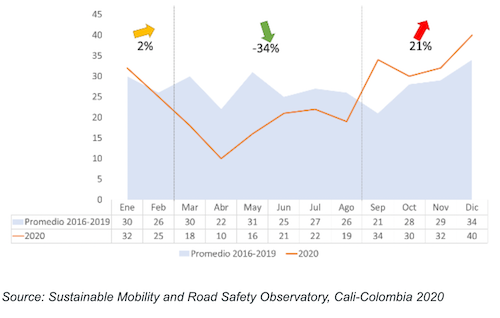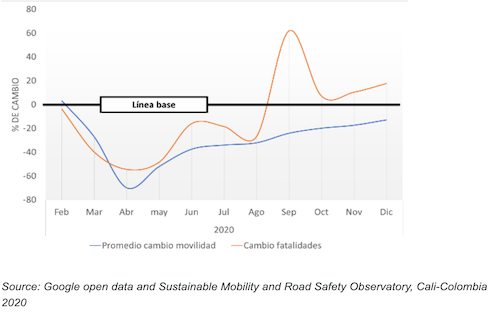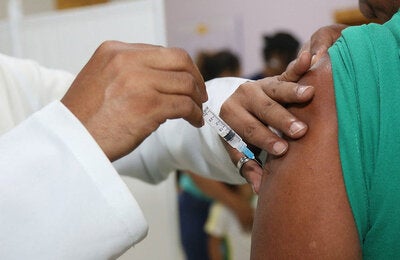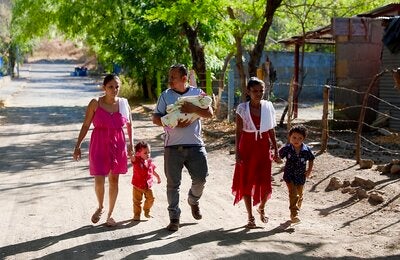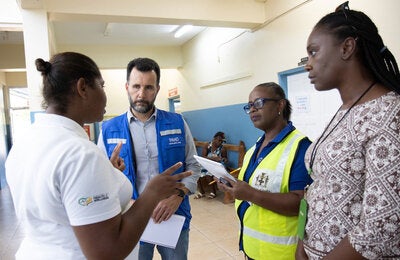Cali, 14 May 2021 (PAHO/WHO) - The city of Cali has one of Colombia’s highest road traffic fatality rates. In response, city authorities monitored changes in speed and road traffic deaths during the pandemic to better understand some of the trends and implications for local road safety policies. The most concerning trend is that the severity of road traffic accidents may have increased during pandemic lockdown – a finding that helps justify the city’s newly strengthened speed-management measures.
Measuring road safety in Cali before and during lockdown
Between 2017 and 2019, nearly 1000 people lost their lives to road crashes in Cali, with young people aged 20–29 years accounting for more than a fifth of those deaths. Speed is undoubtedly a main factor. Using existing data from a particular area, a comparison of pre-pandemic average road speeds and speeds during a “pandemic period” (mid-March–June 2020) was carried out, and findings analysed.
As of 25 March 2020 – the day Colombia’s national lockdown started – an increase in average speed occurred, lasting until approximately mid-April. After this, average speeds gradually fell until they reverted to 2019 levels. On a typical day during the pandemic, the percentage of vehicles exceeding the speed limit of 50 km/h in monitored locations could reach up to 10% of total traffic.
Overall, traffic in Cali decreased by 70% during strict COVID-19 lockdown periods. The number of deaths and injuries from road traffic crashes was also lower during the period of strict lockdown (April 2020) compared to pre-pandemic rates: in April there was a 76% reduction in the number of injuries, and a 55% reduction in deaths. However, since vehicle circulation overall had dropped by 75%, the slower rate of reduction for deaths implies that the severity of road traffic accidents may have increased during the pandemic lockdowns (see Figures 1 and 2).
Figure 1: Comparison of average deaths, 2016-2019 and 2020
Figure 2: Variation in mobility and deaths, 2020
Interpreting lockdown road data for better speed management
Data on increased lockdown speeds may reveal a number of behavioural factors at play: a perceived reduction in risk by drivers seeing fewer vehicles, or an assumption of reduced enforcement during the lockdown. If this is what the data show, they imply that future speeding activities should focus on promoting positive behaviour change to create a default where drivers do not speed even where they believe there is an opportunity to do so. At the same time, enforcement could increase its use of automatic technology, such as more speed cameras and greater public awareness about their use (without providing specific locations). Greater awareness that speed is automatically monitored and penalized might encourage drivers not to speed.
At the same time, a reduction in Cali’s traffic volumes could also be used to encourage a shift towards walking and cycling – incentivized by new bike lanes or traffic-free zones – and perhaps encourage a more permanent reduction in vehicle use.
Future plans to reduce speeding and improve transport safety
Cali’s approach of understanding where and how speeding patterns were changing in the city is a good example of data-based policy development. And as COVID-19 continues to affect people’s daily movements, it will remain important for cities to respond to increases in risks such as speeding to prevent additional lives being lost.
Under the Bloomberg Philanthropies Global Initiative for Road Safety, for the next 6 years Cali will focus on promoting and maintaining speed reduction. Cali has also worked with the Partnership for Healthy Cities to introduce a municipal decree, published in mid-December 2020 by the Mayor’s Office in Cali, to reduce the maximum speed in the city from 60 to 50 km/h, and raise public awareness about the decree and its importance.
As well as improving the safety of roads, Cali has also been working to promote active transport around the city in other ways. For example, a 2020 campaign called “En Bici me Cuido” (“Taking care while cycling”, also supported by the Partnership for Healthy Cities) focused on resolving this issue. The campaign set up a free bike share program, as well as a system for bicycle “doctors” to carry out minor repairs to citizens’ bicycles. In the last 4 months of 2020, 3822 bicycles were repaired by the service. Results from the Cali Cómo Vamos 2020 survey reported that bicycle use went from 4.4% before lockdown to 8.9% after lockdown measures were eased. However, to ensure that cycling continues, campaigns must be complemented by other elements such as speeding restrictions and road design, so that cyclists can move safely around the streets.

